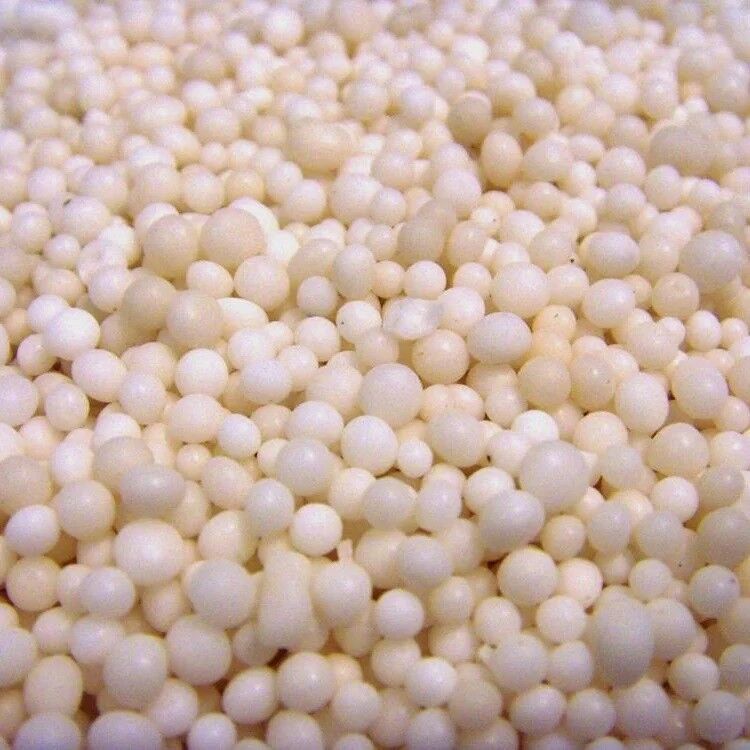Prilled ammonium nitrate agricultural grade
HS Code:3102309000
CAS No: 6484 – 52 – 2
EC No: 229 – 347 – 8
UN Code: 1942
Hazard Class: 5.1
MF: H4N2O3
Grade: agricultural
Export Markets: Global
Universal high-analysis nitrogen fertilizer containing equal amounts of nitrate and ammonium nitrogen to fertilize plants throughout vegetation period Applicable to all types of soil and crop
Most effective if applied as an additional nutrient for agricultural crops in spring and summer
Chemical Properties
Ammonium nitrate (AN) is an odorless, colorless or white, crystal salt produced by the reaction of ammonia and nitric acid. It was the first solid nitrogen (N) fertilizer produced on a large scale. It has been a common nitrogen source because it contains both nitrate and ammonium, and has a relatively high nutrient content. For some crops it is the most environmentally and economically viable N fertilizer.
Uses
Ammonium nitrate can be used directly or as an important component of many fertilizer mixtures. It provides a source of nitrogen to plants to increase growth and crop yields. Ammonium nitrate is a popular fertilizer since it provides half of the N in nitrate form and half in ammonium form. The nitrate form moves readily with soil water to the roots where it is immediately available for plant uptake. Ammonium nitrate is more popular than other nitrogen fertilizers for pasture and hay fertilization since it is less susceptible to volatilization or air losses when left on the soil. It is also valued by vegetable growers for its ability to provide an immediately available nitrate source of plant food.
Agricultural Use
Since plant roots do not directly absorb the urea form of N to a large extent, ammonium nitrate is an efficient and immediate source of plant nutrition. It provides half of the N in the nitrate form and half in the ammonium form. The nitrate form is mobile in the soil water and immediately available for plant uptake. The ammonium fraction is taken up if roots grow nearby or after it is converted to nitrate by soil microorganisms during nitrification.
Many farmers prefer an immediately available nitrate source for plant nutrition and choose ammonium nitrate as their N fertilizer. It is popular for pasture and broad acre crops since almost no ammonia volatilization losses occur, compared to urea-based fertilizers. Some 37 million metric tons (MMt) of fertilizer grade ammonium nitrate are consumed worldwide annually in agriculture, of which about 14 MMt are used as CAN. Because of its high crop recovery, its ease of use, and its suitability for in-season top dressing, ammonium nitrate is widely used, especially in many European countries.
Quality specification:
Treated with the anticaking agent, free from lumps, and free from harmful substances, impurities and foreign matters. Hand-breakable lumps to be considering as free-flowing
| MASS FRACTION OF NITROGEN, MIN (%) | 34.4 |
| MASS FRACTION OF WATER (DRYING METHOD), MAX (%) | 0.4 |
| pH IN 10 % WATER SOLUTION, MIN | 5.0 |
| GRANULE SIZE: | |
| 1-4 MM, MIN (%) | 95 |
| UP TO 1 MM, MAX (%) | 3 |
| STATIC GRANULE STRENGTH, MIN (N/KGF) | 8 |
| FRIABILITY, MIN (%) | 100 |
| MASS FRACTION OF MgO (%) | 0.3-0.5 |
PACKAGING, TRANSPORTATION, AND STORAGE
- Shipped in bulk in 50-kg bags and big bags
- Transported by any means of transportation, except by air, in accordance with applicable cargo transportation rules
- Packed product is stored in covered, dry and clean warehouses to protect it from weather exposure, separately from other substances and materials.
- Guaranteed shelf life is six months from the date of manufacture.
Ask Your Question
WhatsApp:
+ 372 581 788 67
e-mail:
sales@hippocampus.ee
